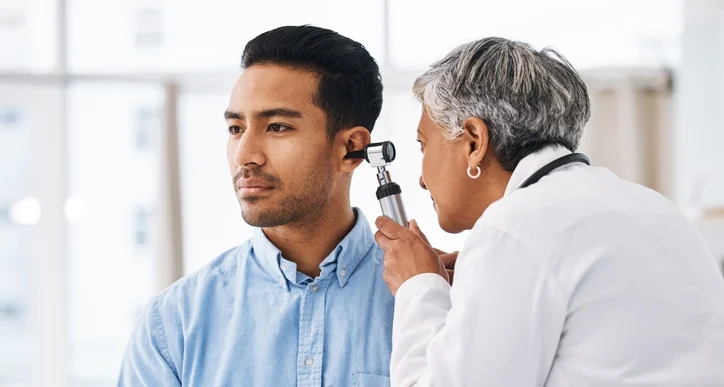
CRNAs and the Anesthesia Care Team Model
Medicine is quickly embracing the team approach to care, including in the anesthesia arena, with certified registered nurse anesthetists (CRNAs) frequently administering the anesthetics.
“The team approach works the best,” said Kraig S. de Lanzac, MD, FASA, assistant secretary of the American Society of Anesthesiologists (ASA). “The value equation seems to lean in the favor of having two heads working through problems in the patient’s life.”
ASA revised its position statement about anesthesia team care in October 2018. The original statement was approved in October 1982.
“ASA has always supported the nurse anesthetist role,” de Lanzac added.
The Anesthesia Care Team (ACT) Model
The ASA statement defines the Anesthesia Care Team Model, or ACT, as “Care [that] is led by a physician anesthesiologist who directs or supervises care of qualified anesthesia personnel and meets the ASA Guidelines for the Ethical Practice of Anesthesiology.” The anesthesiologist may delegate monitoring and some appropriate tasks, but retains overall responsibility for the patient.
As in other areas of the hospital, such as an intensive care unit, patients are familiar with a physician leading the care team and delegating aspects of care to nurses, physical therapists, respiratory therapists and others. de Lanzac describes the anesthesia care team as a more compressed version of that model.
“CRNAs administer anesthesia and analgesia for surgery, labor and delivery, trauma stabilization and chronic pain management as part of the patient care team,” said Garry Brydges, PhD, DNP, MBA, CRNA, FAAN, president, American Association of Nurse Anesthetists (AANA). “All anesthesia professionals use the same procedures to deliver the same anesthetics in the same types of cases, involving patients from every possible demographic.”
CRNAs provide more than 45 million anesthetics to patients annually. In the ACT model, they stay with their patients throughout a procedure, while the anesthesiologist is nearby.
“There is tremendous trust on both sides,” de Lanzac said. “I believe the best value is to have both [anesthesiologist and CRNA] together.”
Direction vs. Supervision
The ASA position statement differentiates between directing and supervising care. de Lanzac explained that “direct” and “supervise” are billing terms, but the hospital or other facility often determines whether the physician directs or supervises care.
In either case, the ASA states that the physician should assess and prepare the patient preoperatively, prescribe the anesthesia plan, ensure a nurse anesthetist or anesthesiologist assistant will be with the patient during the entire surgery, be in area and monitoring during the surgery, provide appropriate post-anesthesia care and participate in the most demanding portions of the case and if an emergency develops.
“The main benefit of an anesthesia care team model is having a second set of hands and eyes and a second anesthesia expert, if needed; however, in reality, this second provider could be either a CRNA or an anesthesiologist, as both are equally qualified to assist in an emergency situation or other care scenario,” Brydges said. “The notion that a patient is safer when a CRNA is supervised by an anesthesiologist has not been borne out by the research literature, including 10 peer-reviewed studies published since 2000.”
Anesthesiologists cannot direct more than four rooms, but with supervision, the anesthesiologist could be responsible for more rooms.

Other Anesthesia Delivery Models
The AANA describes several additional anesthesia delivery models. In the all-MD model, only medical doctors administer anesthesia.
“Because of the higher costs associated with staffing this model, it is most prevalent in one- or two-room surgery centers and less common in large ambulatory surgery centers,” Brydges said.
The MD+CRNA model is similar to the ACT model but with fewer supervision requirements.
With the all-CRNA model, nurse anesthetists administer anesthesia without the supervision of an anesthesiologist.
“In states where physician supervision is required, CRNAs practicing in this model can be supervised by any licensed physician,” Brydges said. “There is no requirement at the federal or state levels that CRNAs need to be supervised by an anesthesiologist.”
CRNAs: Delivering Cost-Effective, High-Quality Care
Brydges indicated, “CRNAs are especially well-suited to meet the challenges of today’s health care environment. Research has confirmed that they are safe, high-quality providers as well as a model of cost-efficiency. And in today’s healthcare environment, economic sustainability is what every hospital administrator strives to achieve daily.”
A 2016 study published in Nursing Economic$ by The Lewin Group concluded that a CRNA working solo was the most cost-effective anesthesia delivery model — 25 percent less costly than the next most cost-effective model, which was medical direction with one anesthesiologist to four CRNAs.
“Whether working solo, or working with an anesthesiologist, our goal is consistent: to ensure our patients the safest, most cost-effective anesthesia care,” Brydges concluded.
AMN Healthcare matches CRNAs, anesthesiologists, and other physicians and advanced practitioners with rewarding career opportunities.
Latest News
Maximizing Opportunity: 4 Internal Medicine Subspecialties Best Suited for Locum Tenens
While internal medicine covers a broad field, certain subspecialties stand out as particularly well-suited to locum tenens positions. From addressing critical care needs to exploring specialized
How Anesthesiologists Can Maximize Their Earning Potential
Anesthesiology is a rewarding career in medicine, both professionally and financially. Yet, like many other professions in healthcare, the earning potential is influenced by a combination of
Exploring OBGYN Subspecialties: Which Path is Right for You?
One of the most exciting aspects of becoming an OBGYN is the opportunity to pursue subspecialties that align with your professional goals, personal interests, and lifestyle preferences.
Screening Guidelines Every Family Medicine Physician Should Follow in 2025
For 2025, significant updates have been made to emphasize personalized medicine, technological advancements, and population-specific needs.
Otolaryngologist Salary Outlook 2025
For otolaryngologists, also known as ears, nose, and throat (ENT) specialists, salary trends reveal not only the growing demand for their expertise but also the evolving dynamics of healthcare
Preparing for Match Week: How to Create Your Rank Order List
Match Week is one of the most exciting—and nerve-wracking—moments in a medical student's life. It's the culmination of years of hard work, perseverance, and ambition, where students
Key Skills for Success in Child and Adolescent Psychiatry
Child and adolescent psychiatry is a deeply rewarding yet multifaceted field that requires a unique blend of clinical expertise, empathy, and communication. These young patients often exhibit
How Much Does a Rheumatologist Make?
On average, salaries for pediatric rheumatologists range from $180,000 to $210,000 per year, according to Salary.com and other healthcare industry sources.











